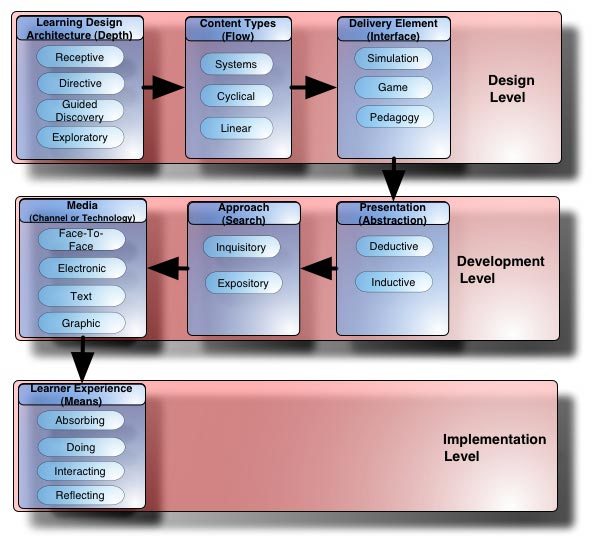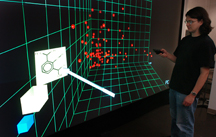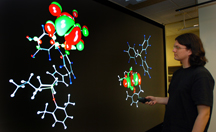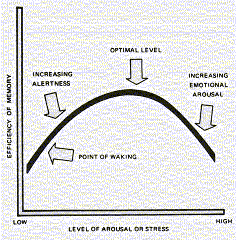In a recent blog, I wrote how
elearning has the two aspects of means & consequence that uses innovative technologies and learning models (the means) to transform the way individuals and organizations acquire new skills and knowledge and access information (the consequence). Note that I slightly change the last part of this definition from the original post.
It is important to understand this concept if you want to play a part, or at least a meaningful part in elearning's growth, which
according to IDC, should look similar to this:

When elearning first arrived on the scene, it was hyped to grow at a phenomenal rate:
The next big killer application for the Internet is going to be education. Education over the Internet is going to be so big it is going to make email usage look like a rounding error. - John Chambers , president and CEO of Cisco Systems (2000).
Now it has enjoyed a modest growth rate so far, but nowhere near the growth that was first hyped. Thus, it is kind of refreshing to see IDC's modest growth prediction, although it still might be slightly on the high side. And this growth rate is going to be fueled by four things:
- Technology (means)
- Learning Methodology (means)
- Acquire new skills and knowledge (consequence)
- Access information (consequence).
Technology
Until recently, most of the discussions on elearning were about the technology aspects. For example, elearning is about learning anything, anyplace, at anytime. Yet it is just about impossible to get very deep into a topic when you are consistently interrupted by phones and co-workers. In addition, elearning is normally done at a computer, which of course does not go everywhere. However, with wireless (m-learning) and
iPods, this is starting to change.
Thus, there are basically three technologies at the moment that will help with elearning's growth:
Broadband
The Gilder Paradigm
(Wired, 4.12 - Dec 1996) reports that in the future, if the law of thrift in the current paradigm is waste watts and transistors, the law of thrift in the new paradigm will be waste bandwidth and save watts. That is, if bandwidth is free, you get a completely different computer architecture and information economy. While other futurist simply tell about the future, George Gilder
(Wired 4.03 - Mar 1996) gives us the nuts and bolts about the future.
Cheap, unlimited bandwidth is not yet reality, however, when it does arrive, it will give an extremely big boost to elearning. Much of the elearning programs developed today are text-based adaptations due to the extra bandwidth required to carry multimedia programs. Learners do not enjoy looking at an hourglass while waiting for downloads of huge video and audio clips. Thus, faster connections will mean that we will be able to add the correct instructional methods to support the learning
Mobile
As
wirless and WiFi networking is becoming more popular, mlearning will boost the feasibility of learning anyplace and anytime (as long as you can get away from those pesky interruptions).
Podcasting
Right now, most people vision elearning as sitting in front of a computer, yet if we change that scenario slightly to listening to a ipod, that is, rather than downloading music, you download some verbal information and perhaps some pictures, then e-learning starts to expand...
Podcasting works similar to a desktop aggregator, in that you
subscribe to a set of feeds, and then view the new stuff from all of the feeds together, or each feed separately.
Podcasting has one major difference -- instead of reading the new content on a computer screen, you listen to the new content on an iPod or iPod-like device. Think of your iPod as having a set of subscriptions that are checked regularly for updates. For a list of some of the podcasts now available, see
podcasts.
Fuel for Growth
The technology aspect of the internet provided the first
means for the beginning of elearning. And by growing it through cheap broadband, mlearning, and podcasting, we further fuel its growth.
This is the first of a four-part series on the growth of elearning. The second
means of fueling the growth of elearning via "learning methods" will be discussed in the next blog. Skills & knowledge and accessing information will then follow.



 During
During  A team at PurdueUniversity is currently developing a similar
A team at PurdueUniversity is currently developing a similar  "Most current approaches to computer-aided discovery center on mining data in a process that assumes there is a nugget of gold that needs to be found in a sea of irrelevant information," Caruthers said. "This data-mining approach is appropriate for some scientific discovery problems, but scientific understanding often proceeds through a different method, a 'knowledge discovery' approach.
"Instead of mining for a nugget of gold, knowledge discovery is more like sifting through a warehouse filled with small gears, levers, etc., none of which is particularly valuable by itself. After appropriate assembly, however, a Rolex watch emerges from the disparate parts."
A team of researchers at Purdue led by Caruthers is developing a computer environment that allows experts to talk naturally in their specific scientific language. That way, the researchers don't have to deal with computerese and can take full advantage of the most advanced visualization capabilities to become more engaged in the scientific discovery process, Caruthers said.
Such a system could become crucial for enabling scientists to deal with the recent explosion of data now available to them. The source of this flood of data is "high-throughput" experimentation, in which hundreds or thousands of experiments are conducted simultaneously in tiny vessels that are sometimes as small as a few human hairs. Having so much information presents a challenge: it is difficult for researchers to find what they are looking for within this huge sea of data.
"Most current approaches to computer-aided discovery center on mining data in a process that assumes there is a nugget of gold that needs to be found in a sea of irrelevant information," Caruthers said. "This data-mining approach is appropriate for some scientific discovery problems, but scientific understanding often proceeds through a different method, a 'knowledge discovery' approach.
"Instead of mining for a nugget of gold, knowledge discovery is more like sifting through a warehouse filled with small gears, levers, etc., none of which is particularly valuable by itself. After appropriate assembly, however, a Rolex watch emerges from the disparate parts."
A team of researchers at Purdue led by Caruthers is developing a computer environment that allows experts to talk naturally in their specific scientific language. That way, the researchers don't have to deal with computerese and can take full advantage of the most advanced visualization capabilities to become more engaged in the scientific discovery process, Caruthers said.
Such a system could become crucial for enabling scientists to deal with the recent explosion of data now available to them. The source of this flood of data is "high-throughput" experimentation, in which hundreds or thousands of experiments are conducted simultaneously in tiny vessels that are sometimes as small as a few human hairs. Having so much information presents a challenge: it is difficult for researchers to find what they are looking for within this huge sea of data.
 This is closely related to the Yerkes-Dodson law -- A certain amount of arousal (in this case anxiety) can be a motivator toward change (with change in this case being learning). But too much or too little anxiety or arousal works against the learner. You want some mid-level of arousal to provide the motivation to change (learn). This is because too little arousal has an inert affect on the learner, while too much has a hyper affect. There are optimal levels of arousal for each task to be learned. The optimal level of arousal is:
This is closely related to the Yerkes-Dodson law -- A certain amount of arousal (in this case anxiety) can be a motivator toward change (with change in this case being learning). But too much or too little anxiety or arousal works against the learner. You want some mid-level of arousal to provide the motivation to change (learn). This is because too little arousal has an inert affect on the learner, while too much has a hyper affect. There are optimal levels of arousal for each task to be learned. The optimal level of arousal is:
 Researchers at the University of Florida have created a neural network made up of 25,000 disembodied rat neurons and hooked it up to a flight simulator on a desktop computer. The neurons, which are growing on top of a multi-electrode array (MEA), are fed information about the simulated F-22's horizontal and vertical movements by stimulating the electrodes, causing them to fire in patterns that are then used to control the aircraft. "It's as if the neurons control the stick in the aircraft, they can move it back and forth and left and right," says UF professor
Researchers at the University of Florida have created a neural network made up of 25,000 disembodied rat neurons and hooked it up to a flight simulator on a desktop computer. The neurons, which are growing on top of a multi-electrode array (MEA), are fed information about the simulated F-22's horizontal and vertical movements by stimulating the electrodes, causing them to fire in patterns that are then used to control the aircraft. "It's as if the neurons control the stick in the aircraft, they can move it back and forth and left and right," says UF professor  The main page of the dashboard shows a series of odometer-style gauges for each indicator and its supported goal. Executives can drill down to reveal underlying objectives, key measures, historical and projected trends, and comparative industry benchmarks. The system also keeps track of strategic learning projects by monitoring timelines, resources, and key milestones.
A recent USA TODAY Gallup Poll of U.S.executives cited more than 60 percent of their time is spent on strategic thinking and planning, and the planning of measurement and monitoring activities. "Chief learning officers must continually show the value of learning to the enterprise. Planning and measuring their strategy are crucial but time-consuming," says Chris Moore, president of Zeroed-In. "CLO Dashboard accelerates that effort and gives learning executives a single place to monitor all key learning indicators, and the business intelligence they need to make timely decisions to support or counteract trends."
CLO Dashboard is 100% web-based and interfaces with other systems using Extensible Markup Language (XML) and Web Services. The system will provide built-in connectors to leading learning platforms including THINQ, Pathlore, EEDO, and Questionmark.
The main page of the dashboard shows a series of odometer-style gauges for each indicator and its supported goal. Executives can drill down to reveal underlying objectives, key measures, historical and projected trends, and comparative industry benchmarks. The system also keeps track of strategic learning projects by monitoring timelines, resources, and key milestones.
A recent USA TODAY Gallup Poll of U.S.executives cited more than 60 percent of their time is spent on strategic thinking and planning, and the planning of measurement and monitoring activities. "Chief learning officers must continually show the value of learning to the enterprise. Planning and measuring their strategy are crucial but time-consuming," says Chris Moore, president of Zeroed-In. "CLO Dashboard accelerates that effort and gives learning executives a single place to monitor all key learning indicators, and the business intelligence they need to make timely decisions to support or counteract trends."
CLO Dashboard is 100% web-based and interfaces with other systems using Extensible Markup Language (XML) and Web Services. The system will provide built-in connectors to leading learning platforms including THINQ, Pathlore, EEDO, and Questionmark.

 Investors who bought the bubble-era hype about "anywhere, anytime" learning that it would quickly put an end to education as we know it lost tens of millions in the dot-com crash. A key reason -- they wildly underestimated the cost and difficulty of delivering quality E-courses. Yet now that so many hard lessons have been learned, a more subtle but perhaps just as significant shift is well underway. Even as enrollment in online distance programs nears 1 million and grows by more than 20 percent a year, according to Boston research firm Eduventures, the much bigger audience turns out to be right in the classroom building. As colleges and high schools embrace
Investors who bought the bubble-era hype about "anywhere, anytime" learning that it would quickly put an end to education as we know it lost tens of millions in the dot-com crash. A key reason -- they wildly underestimated the cost and difficulty of delivering quality E-courses. Yet now that so many hard lessons have been learned, a more subtle but perhaps just as significant shift is well underway. Even as enrollment in online distance programs nears 1 million and grows by more than 20 percent a year, according to Boston research firm Eduventures, the much bigger audience turns out to be right in the classroom building. As colleges and high schools embrace